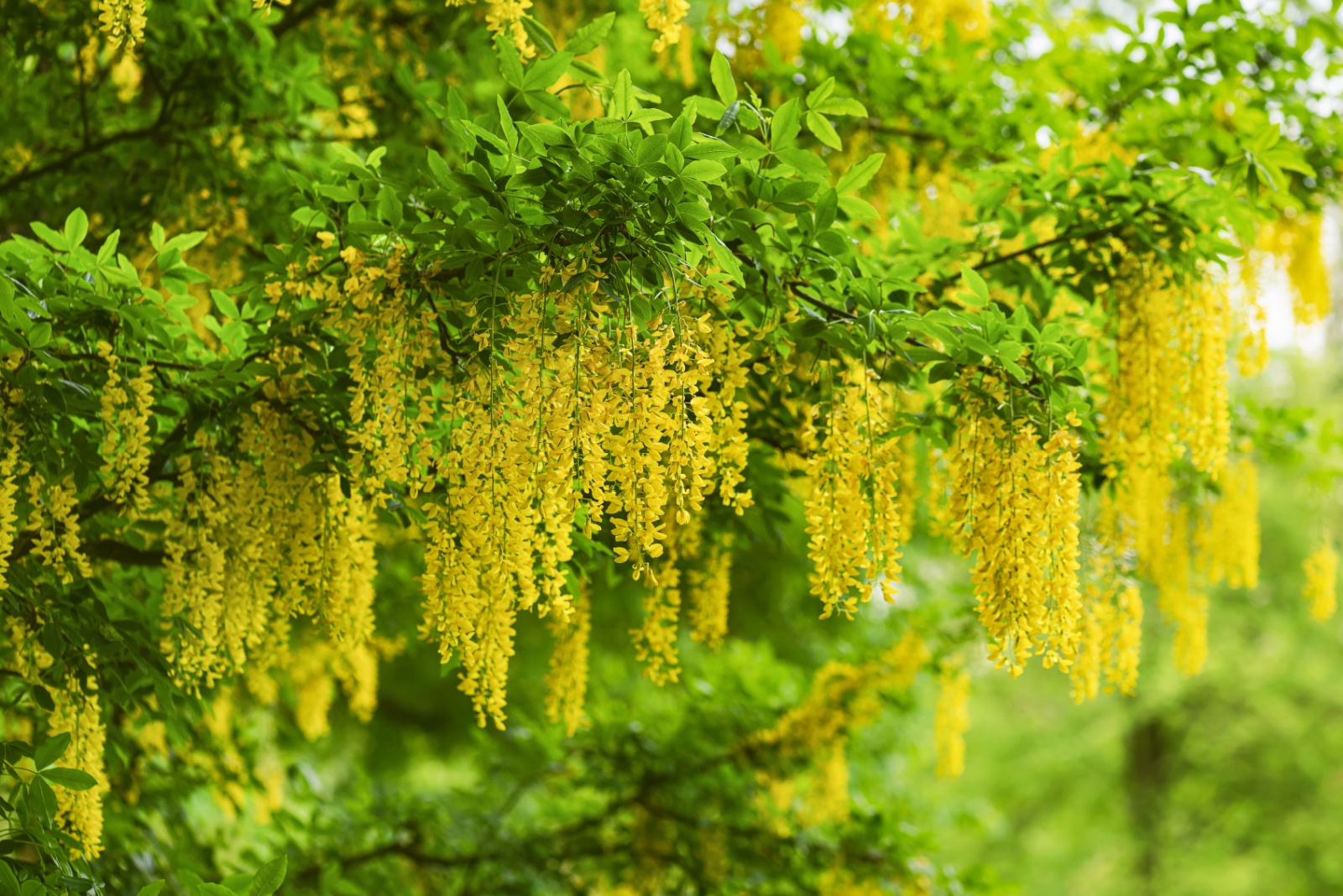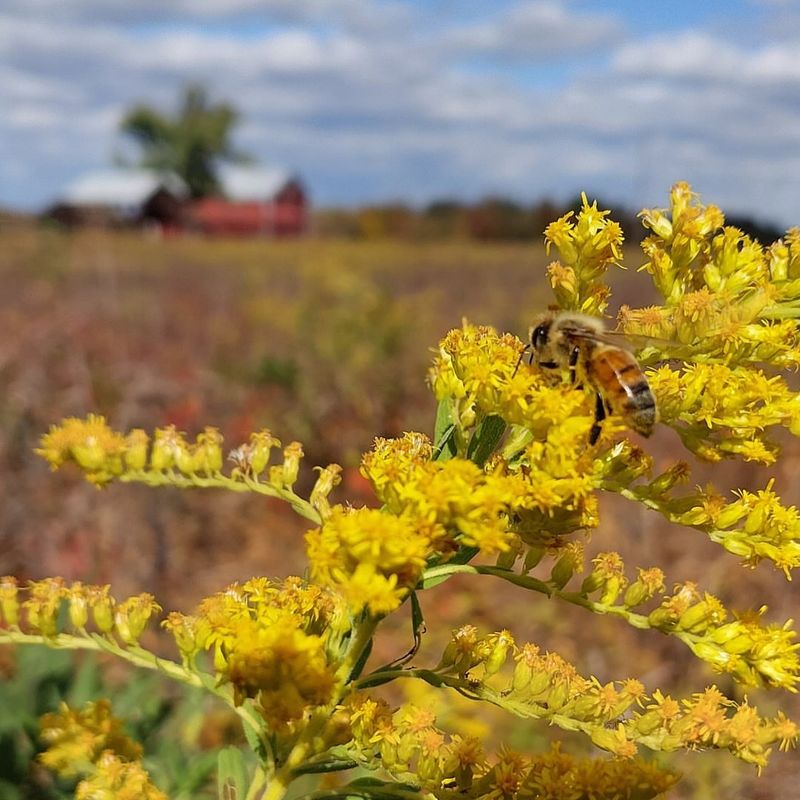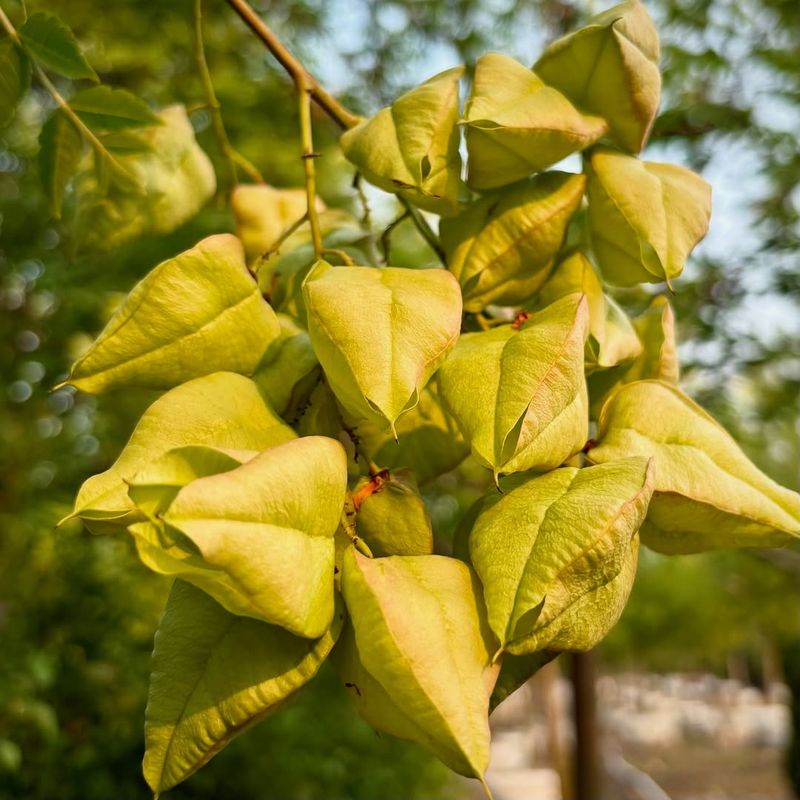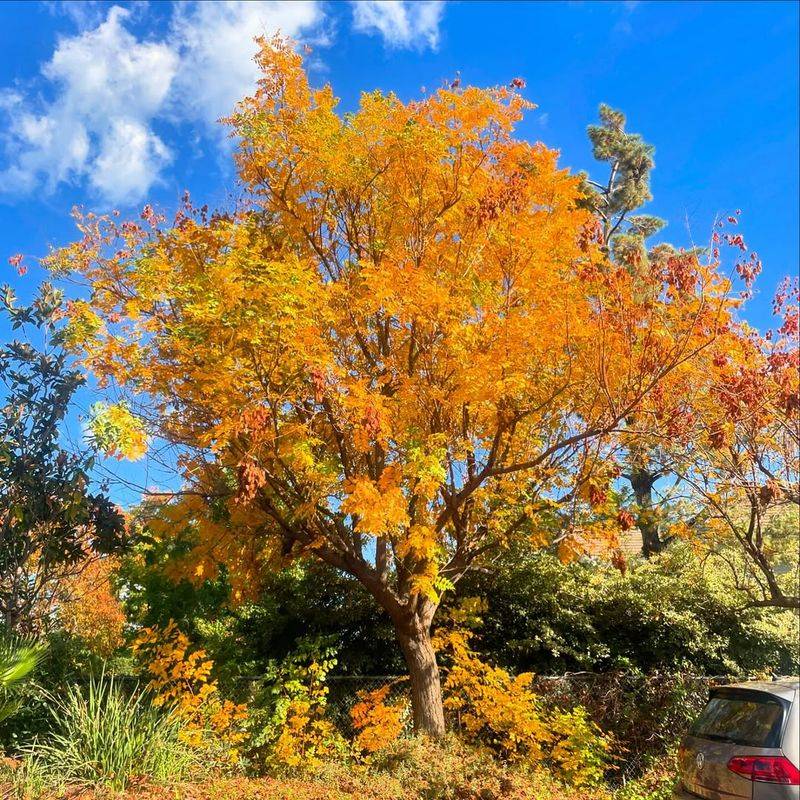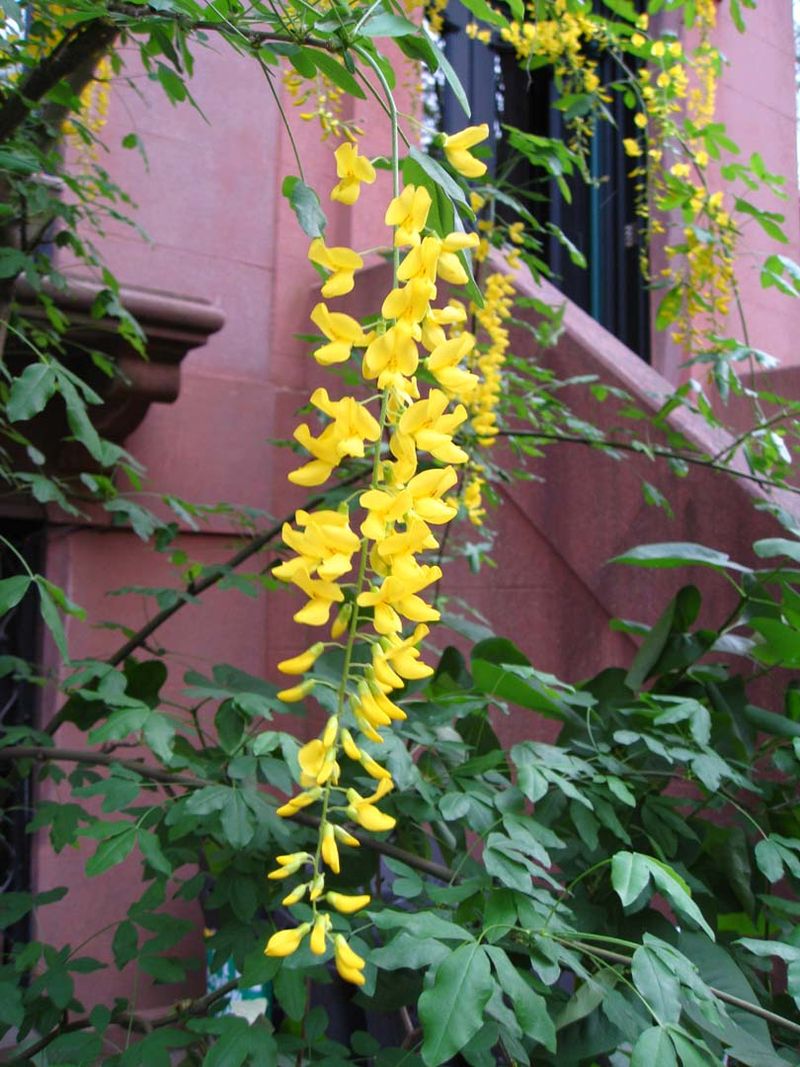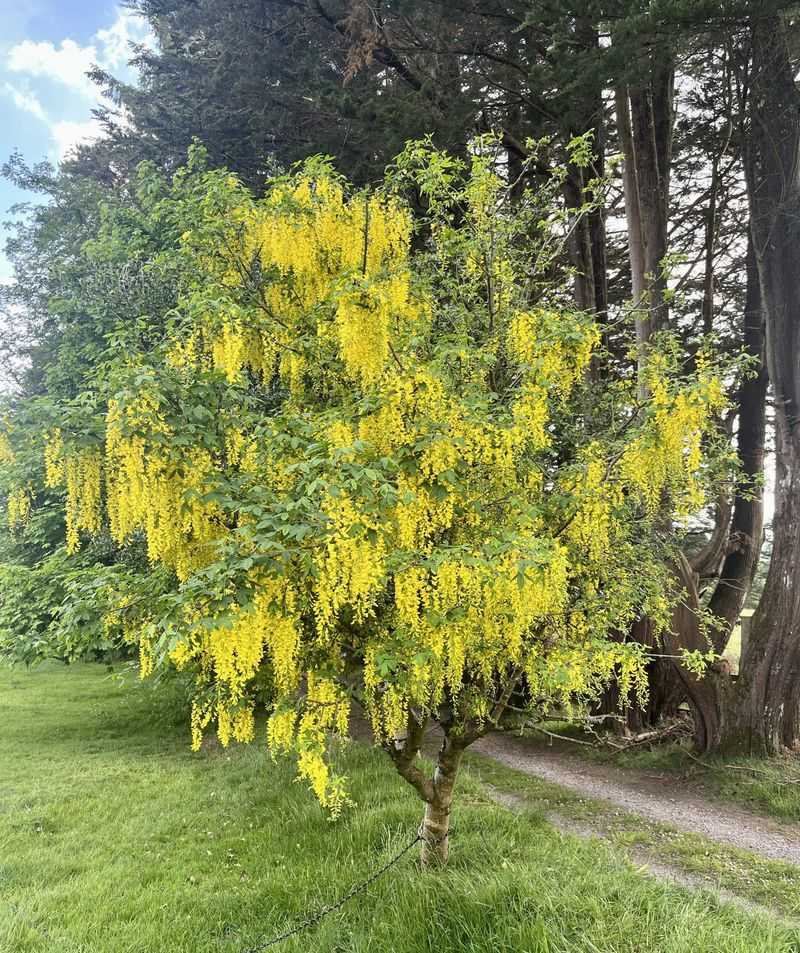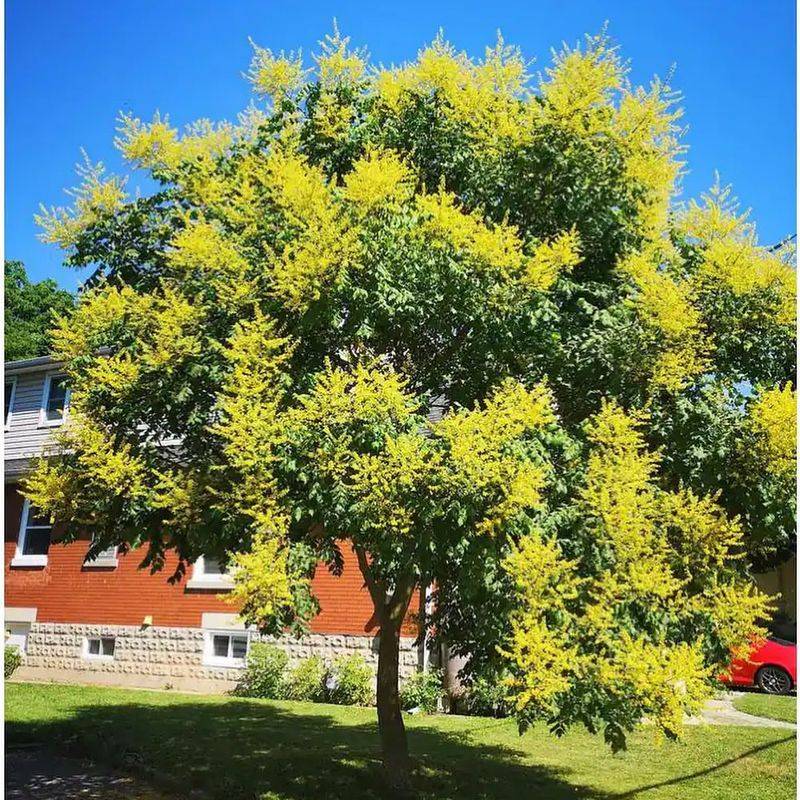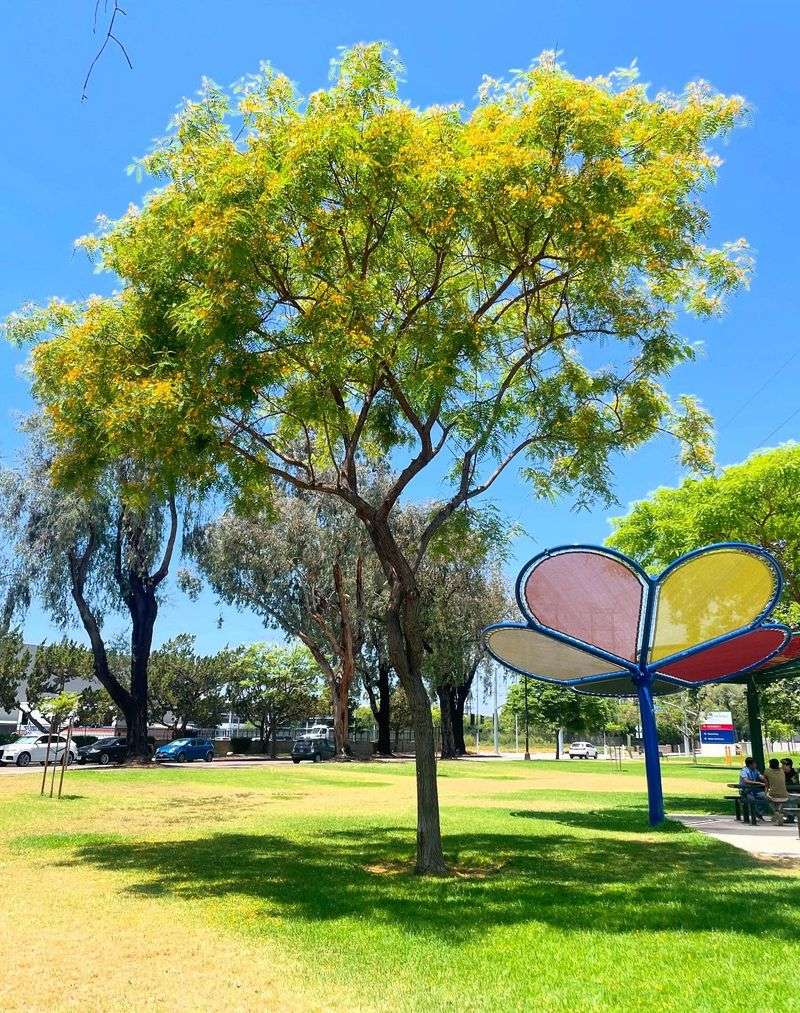When fall paints Arkansas in gold and crimson, one tree steals the show—not just for its color, but for the buzz it brings.
Come fall, this unassuming beauty turns into a five-star buffet for bees, butterflies, and every pollinator in town. The star of the season? The dazzling Goldenrain tree.
1. Golden Blooms Arrive Late In The Season
Most trees finish flowering by summer, but the Goldenrain tree waits until late August or September to show off its bright yellow blooms. Clusters of golden flowers cover the branches like tiny lanterns, creating a stunning display when other plants in Arkansas have already faded.
Pollinators desperately need this late-season food source. Bees and butterflies rely on these flowers to build up energy reserves before winter arrives, making the tree incredibly valuable for local ecosystems.
2. Papery Seed Pods Look Like Chinese Lanterns
After the flowers fade, something equally magical happens. The tree produces papery seed capsules that look remarkably like decorative Chinese lanterns, shifting from green to pink, then tan or brown as autumn progresses.
Each pod contains three dark seeds that rattle when the wind blows. Birds and small mammals enjoy these seeds throughout fall and winter, providing another food source when resources become scarce in colder months.
3. Native To Asia But Thrives In Arkansas
Originally from China, Japan, and Korea, the Goldenrain tree has adapted beautifully to Arkansas’s climate. Gardeners introduced it to North America in the 1700s because of its ornamental beauty and hardy nature.
Arkansas’s warm summers and moderate winters create perfect growing conditions. The tree handles heat, drought, and various soil types with ease, making it a popular choice for homeowners and city planners looking for low-maintenance landscaping options.
4. Bees Absolutely Love The Nectar-Rich Flowers
Watch a blooming Goldenrain tree closely and you’ll witness a buzzing symphony of activity. Honeybees, bumblebees, and native bee species swarm the flowers, collecting precious nectar and pollen when few other sources remain available.
Did you know? A single mature tree can support hundreds of bee visits daily during peak bloom. This late-season nectar helps bee colonies strengthen their numbers before winter, improving their chances of survival through the cold months ahead.
5. Butterflies Find A Final Feast Here
Monarch butterflies migrating through Arkansas in fall depend heavily on late-blooming plants like the Goldenrain tree. Swallowtails, fritillaries, and skippers also frequent these golden flowers, sipping nectar to fuel their journeys or prepare for dormancy.
Watching butterflies dance among the yellow blooms creates a peaceful, enchanting scene. Many gardeners specifically plant Goldenrain trees to support butterfly populations, creating backyard habitats that make a real difference for these delicate creatures.
6. Grows Quickly And Reaches Moderate Size
Patience isn’t required when planting a Goldenrain tree. Young trees grow relatively fast, adding several feet of height each year under good conditions, reaching maturity within 10-15 years.
Mature specimens typically stand 30-40 feet tall with an equally wide, rounded canopy that provides excellent shade. The manageable size makes them perfect for Arkansas residential yards, parks, and street plantings where space might be limited compared to massive oak or maple trees.
7. Tolerates Tough Urban Conditions
Arkansas city trees face harsh challenges—compacted soil, pollution, limited root space, and reflected heat from pavement. The Goldenrain tree handles these stressful conditions better than many ornamental species, making it a champion for urban greening projects.
Its adaptability means more pollinators can find food sources even in developed areas. As cities work to create wildlife-friendly spaces, tough trees like the Goldenrain become essential partners in supporting biodiversity where concrete dominates the landscape.

